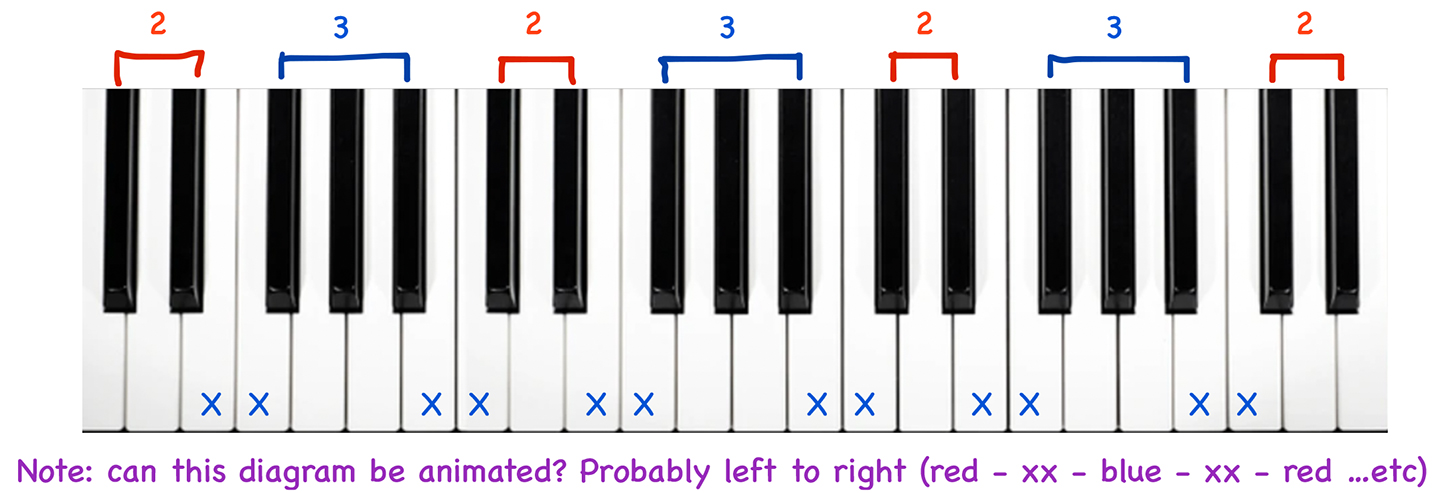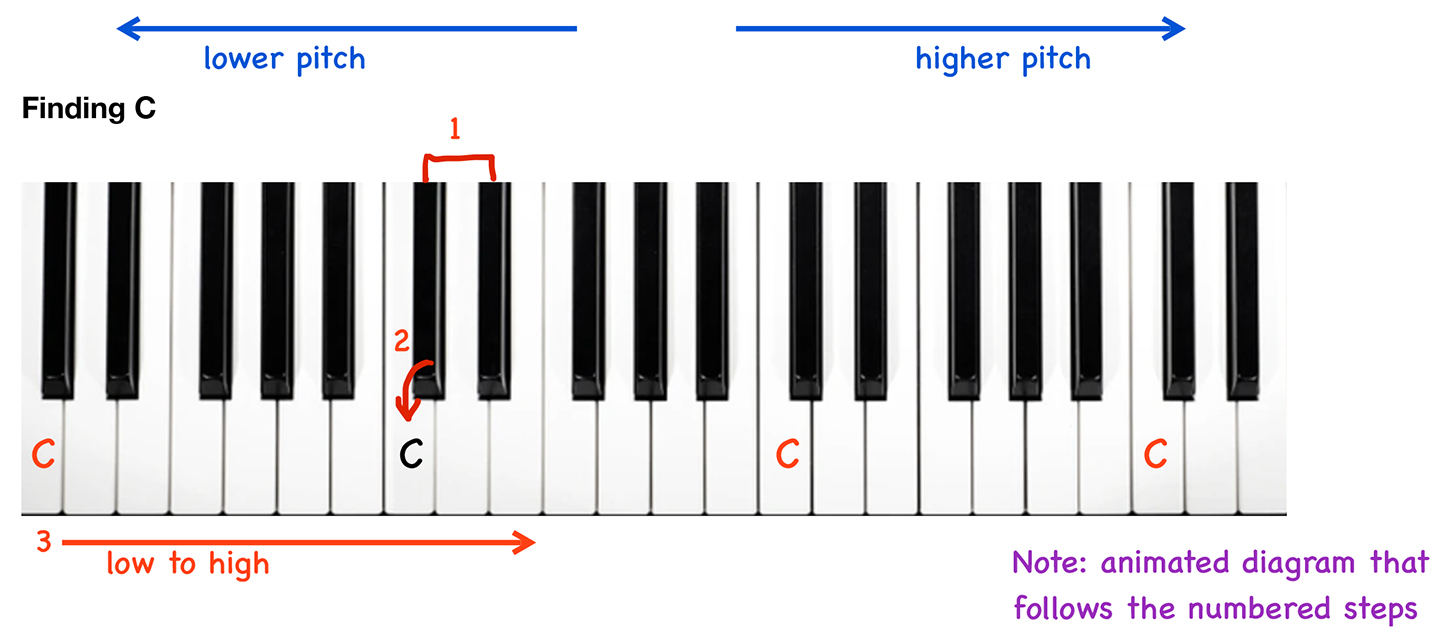




Lesson 2 - Topography of the Piano, Finding C and the Musical Alphabet







The keys of a piano follow a repeating pattern of black and white keys. Notice how the black keys are grouped into twos and threes, separated by two white keys between each group.

Therefore, despite having 88 keys (or less depending on your keyboard), there are only 7 distinct note names: A, B, C, D, E, F, and G. Keys that are positioned similarly have the same name.
The difference between keys of the same name are simply that of higher or lower pitch. If you play a few keys at the left and right extremes of your keyboard, you will notice that the pitches
are lower on the left when compared to those on the right. This is a concept that will be reiterated in later lessons.

We will begin by finding C. Use the diagram above as a reference.
Note: middle C audio can be clicked here
Middle C is the most important note on the keyboard. It is a reference note that allows you to orient yourself at the keys, and will also be used as a guide for finding future notes.
The Musical Alphabet
Now that you know where C is, you can find the other notes from A to G. Play each of the following keys to learn how they sound.

Begin to recognize the name of each key you press and how it sounds. As you first learn tunes, it is good to say the name of the note as you play it. This will help you associate the note with its name and corresponding pitch.